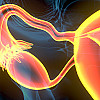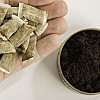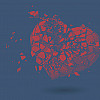Recent Blog Articles

Lead poisoning: What parents should know and do

How does waiting on prostate cancer treatment affect survival?

Does running cause arthritis?

Is alcohol and weight loss surgery a risky combination?

Preventing ovarian cancer: Should women consider removing fallopian tubes?

Healthier planet, healthier people

Is snuff really safer than smoking?

Will miscarriage care remain available?

Considering collagen drinks and supplements?

Does less TV time lower your risk for dementia?
Vascular Birthmarks
What Is It?
A vascular birthmark is a discoloration of the skin that is caused by blood vessels that don't form correctly. They are present at birth or appear shortly after birth. There are three major types of vascular birthmarks:
- Salmon patch (nevus simplex) is a flat patch of pink or red skin, often small, usually with poorly defined borders. Salmon patches may be seen in as many as 1 out of every 3 newborns. They typically are found at the nape of the neck ("stork bite"), on the forehead between the eyebrows ("angel's kiss") or on the eyelids. Often, they are more noticeable during crying or changes in temperature.
- Hemangioma is a raised bright red spot, often small, usually soft and compressible, with well-defined borders. It occurs most commonly on the face, scalp, chest or back. It may be present at birth but more often appears during the first month of life. While many hemangiomas will become less noticeable over time, some may grow quite rapidly. In rare instances, the rapidly growing hemangioma can interfere with organ function.
- Port-wine stain (nevus flammeus) is a flat patch of purple or dark red skin, often large, usually with well-defined borders. It usually is on one side of the face or neck and is present at birth. (Mikhail Gorbachev, former president of the Soviet Union, has a port-wine stain on his forehead.) Port-wine stains affect less than 1% of infants. In rare cases, they are associated with other abnormalities.
Symptoms
Vascular birthmarks are painless and usually don't cause any symptoms other than the skin discoloration.
To continue reading this article, you must log in.
Subscribe to Harvard Health Online for immediate access to health news and information from Harvard Medical School.
- Research health conditions
- Check your symptoms
- Prepare for a doctor's visit or test
- Find the best treatments and procedures for you
- Explore options for better nutrition and exercise
I'd like to receive access to Harvard Health Online for only $4.99 a month.
Sign Me UpAlready a member? Login ».
Disclaimer:
As a service to our readers, Harvard Health Publishing provides access to our library of archived content. Please note the date of last review or update on all articles.
No content on this site, regardless of date, should ever be used as a substitute for direct medical advice from your doctor or other qualified clinician.
Free Healthbeat Signup
Get the latest in health news delivered to your inbox!
